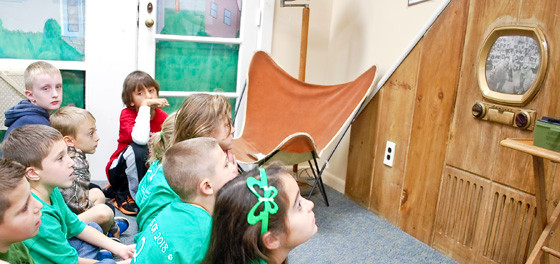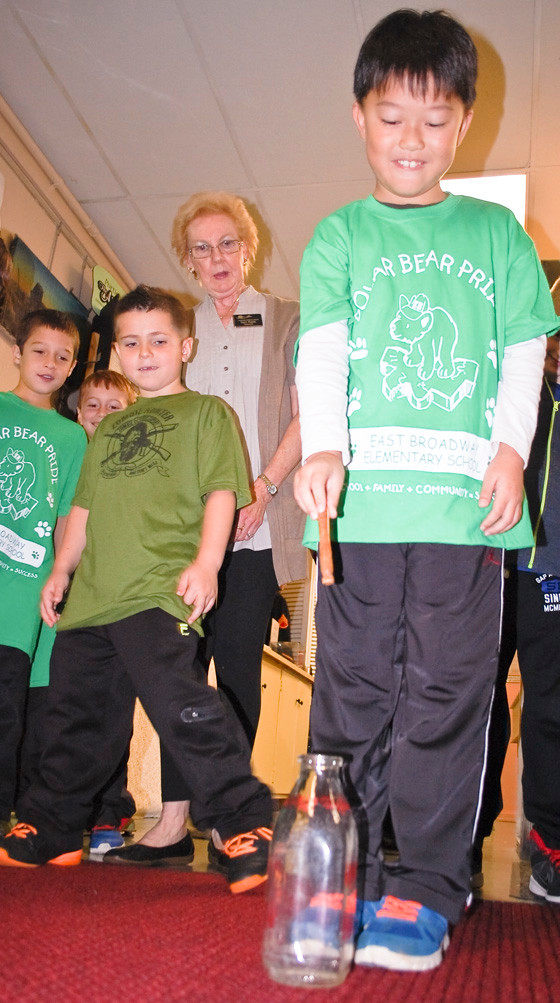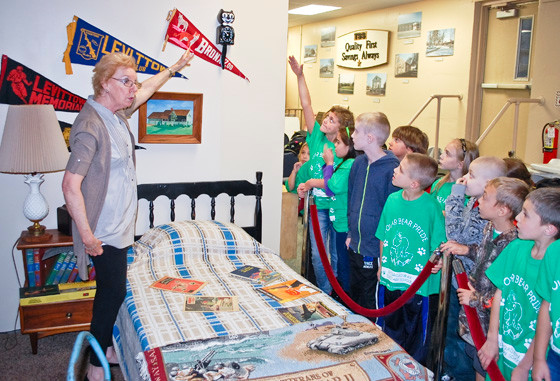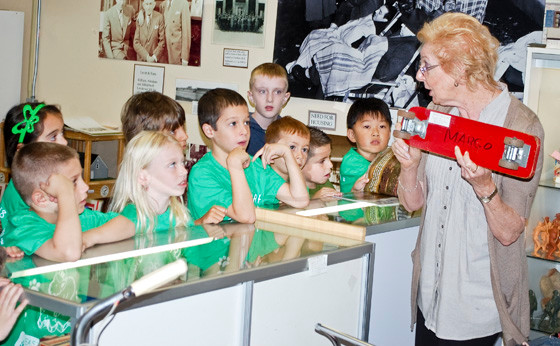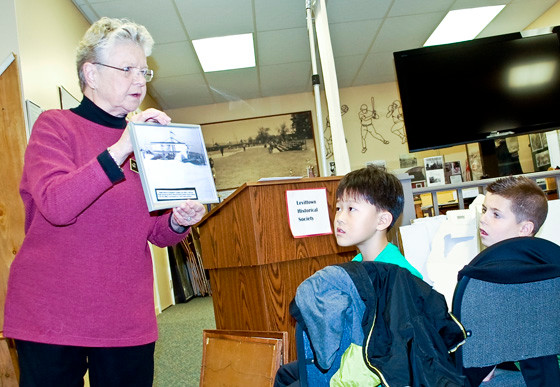Students take a trip back in time
East Broadway second-graders visit local history museum
Levittown is commonly referred to as “America’s first suburb.” On sprawling potato fields, 17,447 houses popped up in several communities, giving returning World War II veterans a chance to own a home and start a family.
Last week, children from the East Broadway Elementary School learned about the beginnings of Long Island’s suburbs when they visited the Levittown Historical Museum. Many students at the school live in Wantagh and Seaford in the outer reaches of the Levitt development. But even for those children who don’t live in a Levitt home, it was a fascinating experience as they learned what life was like for families back in the 1940s and ’50s, when those potato fields were turned into neighborhoods.
Second-graders from Ellen Richman’s class went to the museum, located in the lower level of the Levittown Memorial Education Center, on Nov. 6. Her students are studying citizenship and learning about the parts of a neighborhood. “This way,” Richman said, “they’re learning about the way their own personal neighborhood was. They learn about how communities grow and change, and they have a visual here.”
Docents Geri Raab and Irene Metzler took the students back in time, showing them original pieces of Levitt homes, as well as popular toys from the era. The tour lasted about an hour.
“We try to give them a perspective on the past,” Raab said. “They really get into it. They’re very interested.”
Metzler showed the children some historical photographers, including aerial shots of the area from before and after the homes were built. Raab brought the kids to the toy section, showing them bicycles, rollerskates, skateboards and board games their grandparents might have used. She also showed the collection of 1950s-era dolls, including a Howdy Doody puppet.
The group took a tour of a typical kitchen in a Levitt home, which had actual original cabinets and appliances that were donated after a house was modernized. Students like Logan Rahner, of Wantagh, were amazed at how small the washing machine and refrigerator were.
They saw a typical bedroom, then went to the living room where they gathered around the small television, an item that was built into the wall of some homes. Raab played the students music from the era on a record player.
Rahner, although he does not live in a Levitt house, found the tour very interesting. He said he enjoyed learning about the role women played in World War II while the men were overseas, and how children kept themselves entertained decades ago. “I really liked it when we got to see all the old board games and the toys,” he said. “I didn’t know all those games were made that long ago.”
Richman said the tour was valuable for all children, whether or not they grew up in a Levitt house. The items such as kitchen appliances and furniture could be found in any type of home. The students also got to learn about how parental roles have changed over times, as most mothers did not work back in the 1940s and ’50s.
She noted that her second-graders listened intently throughout their visit.
Raab said that more than 30 classes visit the museum each year from the Levittown and Island Trees school districts. There are numerous historical photographers, and even a section dedicated to schools and sports. Pieces of original Levitt homes range from entire walls to light fixtures and door knockers.
She added that people come from all over the world to see the museum, and many high school reunion groups take tours, as well. The museum is open to the public on Wednesday afternoons and Friday nights.

